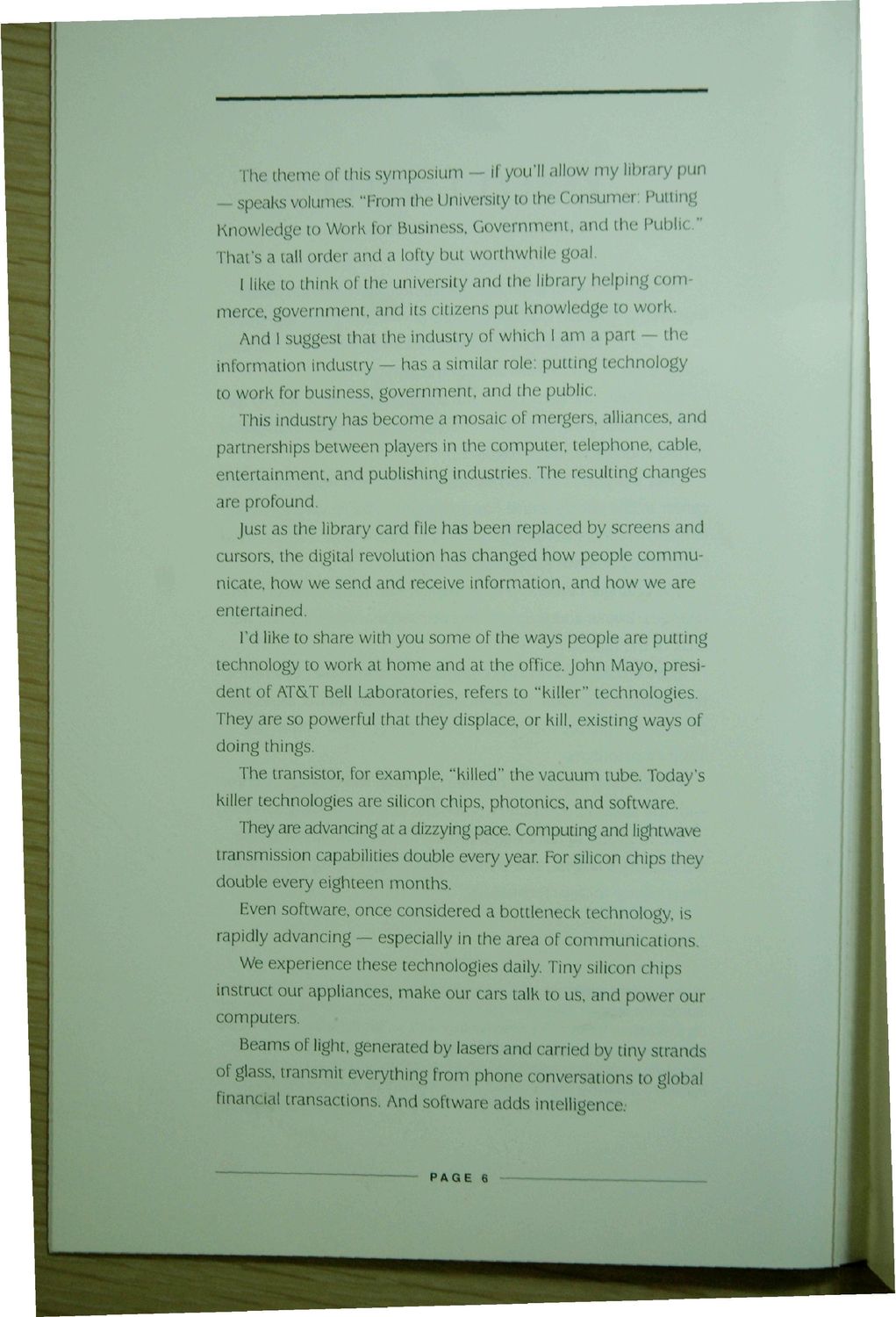| |
| |
Caption: Dedication - Grainger Engineering Library Symposium
This is a reduced-resolution page image for fast online browsing.

EXTRACTED TEXT FROM PAGE:
The theme of this symposium — if you'll allow my library pun _ speaks volumes. "From the University to the Consumer: Putting Knowledge to Work for Business, Government, and the Public' That's a tall order and a lofty but worthwhile goal. I like to think of the university and the library helping commerce, government, and its citizens put knowledge to work. And I suggest that the industry of which I am a part — the information industry — has a similar role: putting technology to work for business, government, and the public. This industry has become a mosaic of mergers, alliances, and partnerships between players in the computer, telephone, cable, entertainment, and publishing industries. The resulting changes are profound. Just as the library card file has been replaced by screens and cursors, the digital revolution has changed how people communicate, how we send and receive information, and how we are entertained. I'd like to share with you some of the ways people are putting technology to work at home and at the office. John Mayo, president of AT&T Bell Laboratories, refers to "killer" technologies. They are so powerful that they displace, or kill, existing ways of doing things. The transistor, for example, "killed" the vacuum tube. Today's killer technologies are silicon chips, photonics, and software. They are advancing at a dizzying pace. Computing and lightwave transmission capabilities double every year. For silicon chips they double every eighteen months. Even software, once considered a bottleneck technology, is rapidly advancing — especially in the area of communications. We experience these technologies daily. Tiny silicon chips instruct our appliances, make our cars talk to us, and power our computers. Beams of light, generated by lasers and carried by tiny strands of glass, transmit everything from phone conversations to global financial transactions. And software adds intelligence: PAGE 6 -
| |